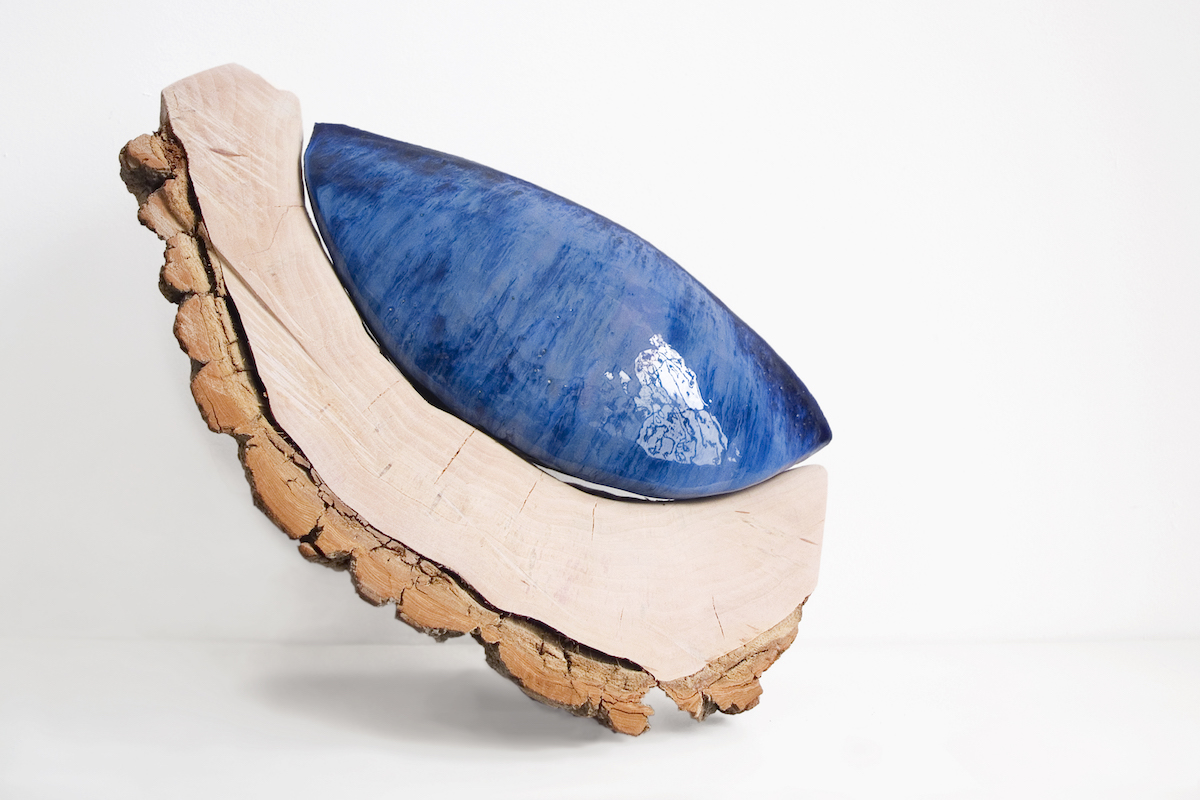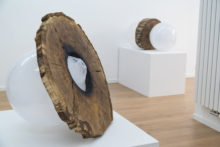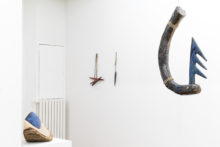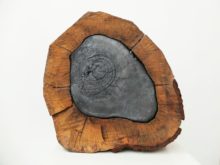by Julie Crenn
A sculptor said—who just had bought
The finest marble ever wrought
What must my chisel here produce?
A god, or cowl for common use?
No, it shall be a god, I swear;
His hand the thunder-bolt shall bear:
Mortals, fall down, or hence be hurled;
Behold the sovereign of the world !
Jean de La Fontaine – The statuary and statue of Jupiter (1678)
A block of stone, earth, concrete or wood, that is the strictly material origin of sculpture. What to do with this material? What to make it say? How to attune it to an extremely rich history? Keen Souhlal is attentive to the physical properties of materials, to their symbolic significance, but also to their history. She injects this knowledge in a reflection in which past and present coexist and attract and hybridize each other. The works, resembling archaeological artifacts, transform the definitions and status of the materials and carefully selected objects. The sculptures are born from technical, material and formal investigations. The artist uses wood, earth, lava, plant fibers, stone, concrete or metal and utilizes either forms that exist in nature or objects resulting from artisanal and traditional practices such as basketry, woodworking, or ceramics.
To this end, for instance, she has studied the design of fishing hooks from different cultures (New Zealand, Polynesia) to produce a new series of sculptures in ceramics. Even if the formal substance of the hook is retained, the artist does not hesitate to transform its materiality and scale. From the totem and amphora to the woven basket, Keen Souhlal revisits everyday and traditional objects. She makes use of their structures and specificities to generate sculptures with new and composite forms. In this sense, she activates a process of mixing, or, what Edouard Glissant refers to as creolization: «Creolization is a mixing of arts or languages that produces the unexpected. It is a way of transforming in a continuous manner without losing oneself. It is a space where dispersion allows us to come together, where cultural shocks, disharmony, disorder, and interference become creators. It is the creation of an open and inextricable culture that upsets the uniformization by the big media and artistic centrals.» By introducing a concept of sculpture situated between geology, ethnology and archeology, Keen Souhlal builds bridges between territories, between art and craft, between nature and culture, between East and West, between the artificial and the natural. The works forward a plural reading of geography, landscapes, cultures, objects and natural materials. Keen Souhlal then, through hybridization and contamination, breaks down barriers and produces the unexpected.




